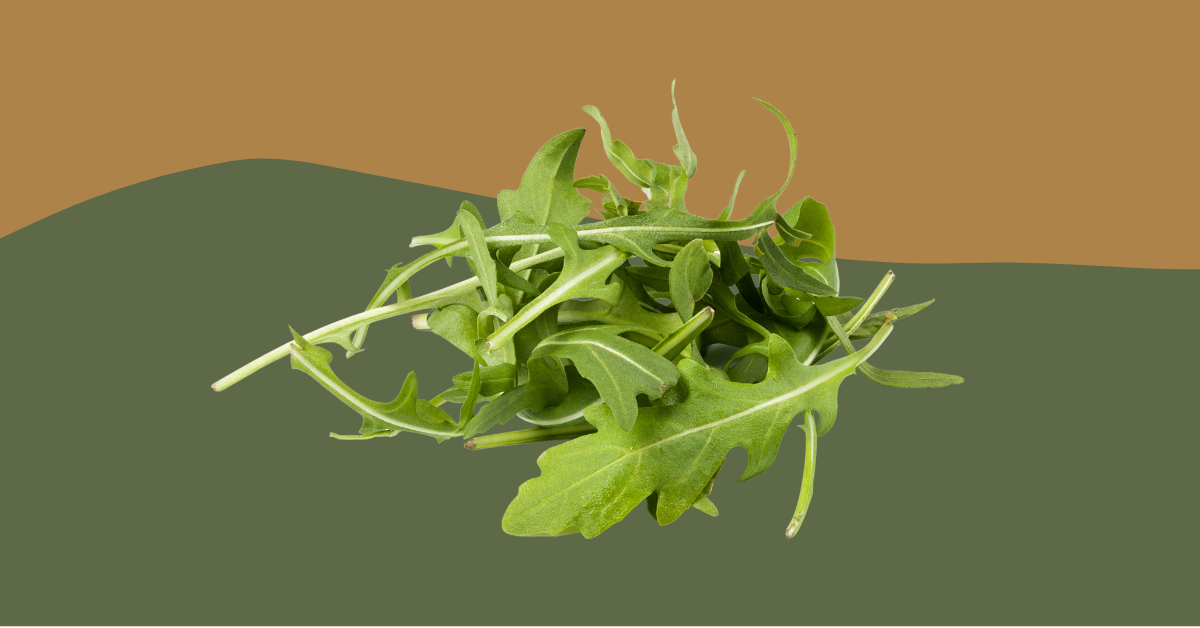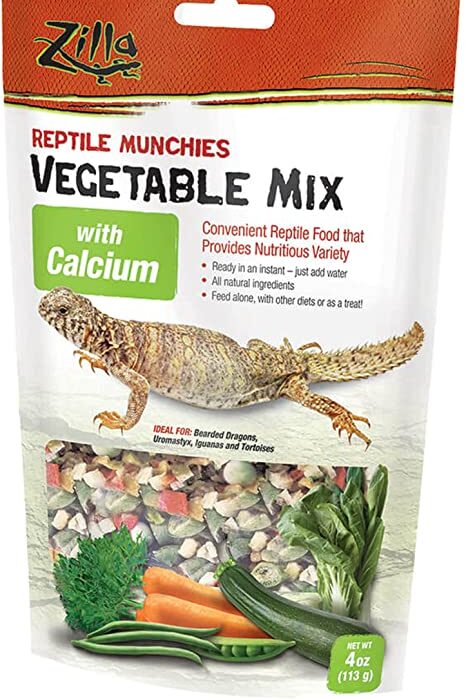Yes, bearded dragons can eat arugula. It is a healthy and nutritious leafy green that can be included in their diet, but it should be offered in moderation as a part of a varied diet.
Table of contents
As a bearded dragon owner, it’s important to understand their dietary requirements to keep them healthy and happy. If you do decide to feed your critter arugula, it’s essential to source these greens from a known and trusted source or grow your own, free of pesticides and chemicals. Don’t forget to wash thoroughly, and cut them into manageable pieces before offering them to your bearded dragon.
Related Article: Bearded Dragon Care: Expert Tips and Insights
Do’s
- Feed arugula in moderation: Offer arugula as part of a varied diet, including other leafy greens, vegetables, and insects. Aim to include arugula in your bearded dragon’s diet no more than once or twice a week.
- Wash arugula thoroughly: Always wash arugula and other produce to remove any pesticides, dirt, or debris that may be harmful to your bearded dragon.
- Chop arugula into small pieces: To prevent choking, chop arugula into small, manageable pieces that are appropriate for your bearded dragon’s size.
Don’ts
- Don’t rely solely on arugula: While it is a healthy addition, it should not be the primary food source for your bearded dragon. Provide a well-rounded diet that includes other vegetables, greens, and insects.
- Don’t feed arugula with high-oxalate foods: Arugula contains moderate levels of oxalates, so it’s best not to combine it with other high-oxalate foods (such as spinach) to avoid potential health issues.
Best Practices for Feeding Arugula to Bearded Dragons
Following best practices when feeding your bearded dragon will ensure their safety and overall health. Here are some best practices to keep in mind:
- Variety is key: A balanced diet should include a mix of leafy greens, vegetables, and insects. Incorporate various food sources such as collard greens, mustard greens, dandelion greens, bell peppers, and squash to provide essential nutrients.
- Feed age-appropriate food: Young bearded dragons require more insects in their diet than adults. As they grow, gradually decrease the insect-to-vegetable ratio. Adult bearded dragons should have a diet consisting of 75-80% vegetables and greens, and 20-25% insects.
- Choose organic when possible: Opt for organic arugula and other vegetables to minimize the risk of pesticide exposure. If organic options are not available, thoroughly wash all produce before feeding it to your bearded dragon.
- Monitor your bearded dragon’s health: Keep an eye on your pet’s weight, energy levels, and overall health to ensure they are thriving on their diet. Regular veterinary check-ups can help identify any potential health issues early on.
- Consult a veterinarian: If you have concerns about your bearded dragon’s diet or health, consult a veterinarian specializing in reptiles. They can provide tailored advice for your pet’s specific needs.
- Gut-load and dust insects: Before feeding insects to your bearded dragon, gut-load them with nutritious food for 24 hours. This enhances their nutritional value. Additionally, dust insects with calcium and vitamin supplements to ensure proper nutrient intake.
- Avoid overfeeding: Overfeeding can lead to obesity and other health issues. Feed your bearded dragon an appropriate amount of food based on their age, size, and activity level. Consult your veterinarian for specific feeding guidelines.
- Hydration is important: Ensure your bearded dragon has access to fresh water at all times. Although they obtain most of their hydration from their diet, providing a shallow water dish can help maintain proper hydration levels.
- Monitor calcium and phosphorus ratios: The ideal calcium to phosphorus ratio for bearded dragons is 1.5:1 to 2:1. Arugula has a favorable calcium to phosphorus ratio, but make sure to balance it with other food sources to maintain the optimal ratio.
- Research before introducing new foods: When introducing new foods to your bearded dragon’s diet, research their nutritional content and potential risks. This will help you make informed decisions and ensure your pet’s diet remains balanced and healthy.
Related Article: Bearded Dragon Feeding Guide: Nutrition Tips
Step-by-Step Guide to Preparing Arugula for Your Bearded Dragon
Step 1
Purchase fresh arugula: Look for fresh, organic arugula when shopping for your bearded dragon’s food.
Step 2
Wash arugula: Rinse the arugula under running water to remove any dirt, pesticides, or debris.
Step 3
Chop arugula: Cut the arugula into small, manageable pieces appropriate for your bearded dragon’s size.
Step 4
Mix with other greens and vegetables: Combine arugula with other leafy greens and vegetables to create a balanced and varied meal.
Step 5
Serve to your bearded dragon: Place the prepared salad in your bearded dragon’s enclosure, using a shallow dish or directly on a clean surface.
Need Recommendations?
Here’s Our Top Amazon Picks
You may also like 📖
Frequently Asked Questions
How often should I feed arugula to my bearded dragon?
Feed arugula to your bearded dragon no more than once or twice a week as part of a varied diet. Overfeeding any one type of vegetable or green can lead to nutritional imbalances.
What other leafy greens can I feed my bearded dragon?
Some other healthy leafy greens include collard greens, mustard greens, dandelion greens, endive, and escarole. These greens provide essential nutrients and can be rotated with arugula to create a varied diet.
Can I mix arugula with fruit?
Yes, you can mix arugula with fruit, but it should be done sparingly as fruits are high in sugar and should only be an occasional treat. Suitable fruits include blueberries, raspberries, and small amounts of apple or banana.
Do bearded dragons require any supplements in their diet?
Yes, bearded dragons require calcium and vitamin D3 supplements to maintain healthy bone growth and prevent metabolic bone disease. Consult your veterinarian for appropriate dosages and frequency based on your pet’s age, size, and dietary needs.
What insects are suitable for bearded dragons?
Some suitable insects for bearded dragons include crickets, mealworms, waxworms, and dubia roaches. Make sure to gut-load insects and dust them with calcium and vitamin supplements before feeding them to your bearded dragon.
Can I feed my bearded dragon frozen vegetables and greens?
While fresh produce is the best option, you can use frozen vegetables and greens in a pinch. Thaw and rinse them thoroughly before serving, and ensure they are free of additives and preservatives.
What are the signs of a healthy bearded dragon diet?
A healthy bearded dragon will have a steady weight gain, regular bowel movements, bright and alert eyes, and a strong appetite. Signs of an imbalanced diet can include lethargy, weight loss, and irregular bowel movements.
How do I know if my bearded dragon is overeating arugula or other greens?
If your bearded dragon is overeating arugula or other greens, they may develop diarrhea, bloating, or show signs of nutrient imbalances. Monitor your pet’s health and adjust their diet accordingly, consulting your veterinarian if you have concerns.
Can I grow my own arugula for my bearded dragon?
Yes, growing your own arugula can be a great way to provide fresh, pesticide-free greens for your bearded dragon. Ensure the plants receive proper care and are not exposed to harmful chemicals.
How do I transition my bearded dragon to a new food like arugula?
Introduce new foods gradually by mixing small amounts with their current diet. Monitor your bearded dragon’s response and adjust the proportions as needed. This will help prevent digestive upset and ensure a smooth transition.
Conclusion and final thoughts 💭
Arugula is a healthy and nutritious addition to your bearded dragon’s diet when offered in moderation. By incorporating a variety of leafy greens, vegetables, and insects, you can provide your bearded dragon with a well-balanced diet that supports their overall health.
Always consult a veterinarian if you have concerns about your bearded dragon’s diet or well-being.
Looking for more? Here’s our roadmap:
General Bearded Dragon Pet Owners Guide
Bearded dragons are native to the arid regions of Australia and are known for their unique beard-like appearance. As pets, they have become increasingly popular due to their friendly and inquisitive nature, making them an ideal choice for reptile enthusiasts. Bearded dragons are diurnal, meaning they are active during the day, and their average lifespan ranges from 8 to 12 years, with proper care. When considering adopting a bearded dragon, it’s essential to be prepared for a long-term commitment and be well-informed about their care requirements.
One of the most crucial aspects of bearded dragon care is providing an appropriate enclosure. Adult bearded dragons thrive best in a 20 to 50-gallon tank, but a larger enclosure is always better. It’s important to always keep the tank clean. The tank should have a basking area with a temperature range of 95-110 degrees Fahrenheit, as well as a cooler area with a temperature between 75-85 degrees Fahrenheit. In addition, bearded dragons need access to UVB lighting to help them synthesize vitamin D3 and properly metabolize calcium, which is vital for their bone health.
A balanced diet is essential for a healthy bearded dragon. Their dietary requirements change throughout their life stages; juvenile bearded dragons need a higher protein intake, with insects making up around 80% of their diet and the remaining 20% consisting of vegetables and fruits. As they grow into adults, their diet should consist of approximately 20% insects and 80% vegetables and fruits. It’s important to offer a variety of food items to ensure they receive all the necessary nutrients, and to dust their food with calcium and multivitamin supplements as recommended by a reptile specialist or veterinarian.
Regular interaction and observation of your bearded dragon are vital for maintaining their well-being. Handling your pet gently and frequently can help build trust and strengthen your bond. Monitor your bearded dragon’s behavior, appetite, and overall health to detect any potential issues early on. If you notice any signs of illness, such as lethargy, loss of appetite, or irregular bowel movements, consult a reptile specialist or veterinarian for guidance. Proper care, feeding, and attention will ensure your bearded dragon remains a happy and healthy companion for years to come.







Leave a Reply